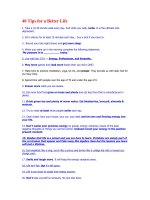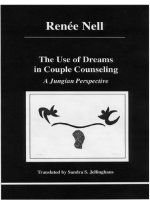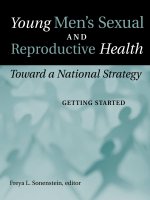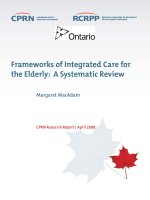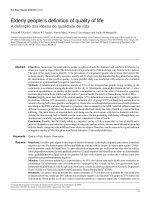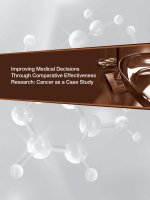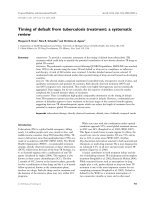Asperger Syndrome Natural Steps toward a Better Life pot
Bạn đang xem bản rút gọn của tài liệu. Xem và tải ngay bản đầy đủ của tài liệu tại đây (620.69 KB, 201 trang )
Asperger Syndrome:
Natural Steps toward a
Better Life
Suzanne C. Lawton, N.D.
PRAEGER
Asperger Syndrome
Recent Titles in
Complementary and Alternative Medicine
Herbs and Nutrients for the Mind: A Guide to Natural Brain Enhancers
Chris D. Meletis, N.D., and Jason E. Barker, N.D.
Asperger Syndrome
Natural Steps toward a Better Life
Suzanne C. Lawton, N.D.
Foreword by Judyth Reichenberg-Ullman, N.D.
Complementary and Alternative Medicine
Chris D. Meletis, Series Editor
Library of Congress Cataloging-in-Publication Data
Lawton, Suzanne C., 1955–
Asperger syndrome : natural steps toward a better life / Suzanne C. Lawton ; foreword
by Judyth Reichenberg-Ullman.
p. ; cm.—(Complementary and alternative medicine, ISSN 1549–084X)
Includes bibliographical references and index.
ISBN-13: 978–0–275–99178–4 (alk. paper)
1. Asperger’s syndrome. 2. Asperger’s syndrome—Alternative treatment. [DNLM:
1. Asperger Syndrome. 2. Adolescent. 3. Adult. 4. Child. 5. Complementary
Therapies. WS 350.6 L425a 2007] I. Title. II. Complementary and alternative
medicine
RC553.A88L395 2007
616.85
8832—dc22 2007023402
British Library Cataloguing in Publication Data is available.
Copyright
C
2007 by Suzanne C. Lawton, N.D.
All rights reserved. No portion of this book may be
reproduced, by any process or technique, without the
express written consent of the publisher.
Library of Congress Catalog Card Number: 2007023402
ISBN-13: 978–0–275–99178–4
ISSN: 1549-084X
First published in 2007
Praeger Publishers, 88 Post Road West, Westport, CT 06881
An imprint of Greenwood Publishing Group, Inc.
www.praeger.com
Printed in the United States of America
The paper used in this book complies with the
Permanent Paper Standard issued by the National
Information Standards Organization (Z39.48–1984).
10987654321
This book is intended to provide the reader with information only. As noted throughout
the text, individuals should consult appropriate health care practitioners knowledgeable
in the field of natural medicine prior to pursuing any particular course of treatment.
Names and identifying facts have been changed for all case studies included within this
book so that individuals who may be described in the case studies will not be recognizable.
Any similarities between the case study descriptions and actual, living persons are purely
coincidental.
The publisher has done its best to make sure the instructions and/or recipes in this book
are correct. However, users should apply judgment and experience when preparing recipes,
especially parents and teachers working with young people. The publisher accepts no
responsibility for the outcome of any recipe included in this volume.
Contents
Series Foreword vii
Foreword by Judyth Reichenberg-Ullman, N.D. ix
Preface xiii
Chapter 1: Asperger Syndrome: What It Is and What It Isn’t 1
Chapter 2: What Asperger Syndrome Looks Like in Children and
Teenagers 11
Chapter 3: What Asperger Syndrome Looks Like in an Adult 29
Chapter 4: Face Blindness and Place Blindness—Who Are You and
Where Am I Going? 41
Chapter 5: Conventional Asperger Treatment: Then and Now 53
Chapter 6: Physical Symptoms Associated with Asperger Syndrome 65
Chapter 7: What You Eat Affects How You Act 77
Chapter 8: How the Environment Affects Asperger Syndrome 99
Chapter 9: Deer in the Headlights—Dealing with Anxiety,
Depression, and Sleep 119
Chapter 10: Homeopathy: A Giant Leap Forward 135
Chapter 11: What You Can Do Right Now 145
Appendix A: Resources Helpful in Addressing Asperger Syndrome 153
vi CONTENTS
Appendix B: Common Mercury Derivatives 157
Appendix C: Tasty Pesto Recipes Which Will Also Help with
Chemical Detoxification 159
Notes 163
Selected Bibliography 175
Index 177
Series Foreword
Dr. Suzanne Lawton and the growing number of physicians that embrace health
care from atruly integrative approachare pioneering the wayfor the nextquantum
leap in significant advances in both academic and clinical medicine. With the
support of the National Institutes of Health (NIH) and National Center for
Complementary and Alternative Medicine (NCCAM) and funding from both
private and public sectors the appreciation for the integration of health care
education and delivery is becoming a greater reality.
There is no more important time for all health care providers to embrace the
concept of “individualized patient oriented wellness.” Thanks to the work of Dr.
David Eisenberg and similar studies we now know that Americans are allocated
billions of discretionary dollars to seek out what used to be termed “alternative
medicine” approaches. Yet what was once considered fully “alternative” is be-
coming integrated, as evidence grows, into the mainstream. The first step in true
integration is to realize that health care is a continuum that is both fluid and
dynamic.
The nearly ten-fold increase in autism over the last twenty years demands
that this epidemic serves as a unifying force for all fields of medicine to work
seamlessly in resolving what many consider the ultimate “coal miner’s canary”
of modern society. It is only through the concerted efforts of the whole health
care and research community that the formulation of hypotheses relative to the
increased prevalence, potential etiologies, diagnostics, and treatment options can
most expeditiously be addressed. With our public and private school systems,
families, and social services fully entrenched in this epidemic and the current
trending of statistics, the only option is prevention and early intervention.
This work on Asperger’s syndrome is an important contribution that provides
a platform for health care provider and patient alike to proceed with a heightened
viii SERIES FOREWORD
level of awareness, insights, and literally a head start in establishing a working
foundation to meet the unique needs of each patient as they participate in the
lifelong journey of health care, which should be with the advent of an integrated
approach that would more accurately be termed “wellness care.”
Chris D. Meletis
Series Editor
Foreword
Asperger Syndrome (AS) has, as Dr. Suzanne Lawton so correctly reminds the
reader, baffled Dr. Hans Asperger and baffles parents, children, physicians, and
other health care practitioners, researchers, and others to this day. We cannot
seem to agree on the cause or even, universally, on the diagnosis, much less the
treatment. Auditoriums full of angry, impassioned, sometimes desperate, parents
have gathered to berate the apparent lack of concern on the part of governmental
institutions regarding mercury-laden vaccine preservatives. Families spend inor-
dinate amounts of time, energy, and financial resources on any number of health
care approaches for their Asperger children. So many affected children, so many
questions, and so few answers.
We can agree that the number of children, and adults, diagnosed with AS has
risen to the point that many would consider to be epidemic. The current estimate
is one out of every 150 children in this country. Though, coinciding with the
removal (relatively speaking) of thimerosal in most childhood immunizations, the
numbers appear tobe diminishing; theincidence is saidto be growingconsiderably
in China, where we are now exporting those earlier batches of preserved vaccines.
Given the groundbreaking discovery of a gene associated with autism, we
may agree on some genetic component. Yet to come to light is exactly how
that hereditary tendency might make this group of children and adults more
susceptible to environmental influences.
We can agree that AS embraces a complex, curious, and often confusing con-
stellation of symptoms. And that, despite their sometimes superior intelligence
and efforts to adapt to our neurotypical society, these children and adults experi-
ence tremendous challenges—physical, emotional, social, academic, and senso-
rial. Despite their efforts to do the best they can, they frequently find themselves
misunderstood and ostracized.
xFOREWORD
So, now that there is more widespread consensus that AS does in fact exist,
is more prevalent than Hans Asperger would have ever imagined, and that it
is indeed a serious problem for parents, adults, families, educators, and for our
society, what do we do about it?
You may have heard the expression, “If you area hammer, everything looks like
a nail.” Professionals addressing the dilemma of AS tend naturally to use the ther-
apies or approaches with which they are most familiar. Conventional physicians
choose pharmaceuticals; complementary and alternative physicians generally opt
for DAN (Defeat Autism Now)! Protocol: nutritionally oriented practitioners
recommend the gluten-free/casein-free (GF/CF) diet. And, so it goes, with each
team, so to speak, rallying around a particular treatment protocol or set of pro-
tocols. This book, on the other hand, offers a cornucopia of well-researched and
effective natural alternatives presented in an open-minded, practical manner.
I suppose that I am prejudiced toward this book already because I am a licensed
naturopathic physician (N.D.) of twenty-four years. So much of what I appreciate
about naturopathic medicine is embodied in this book by Dr. Lawton. Naturo-
pathic students learn, from day one, about the principle of vis medicatrix naturae,
the healing power of nature. As an N.D., I genuinely believe that, despite insults,
imbalances, and insults that the organism, if nudged gently in the direction of
healing, has the ability to heal itself. This is far different from the concept of
the “anti’s”—antibiotics, antifungals, antihistamines, and immunosuppressants,
etc. Naturopathic doctors, as you will be reminded again and again as you read
this book, trust that natural healing is not only possible, but the most sane and
commonsense way to heal ourselves. Through a healthy lifestyle that includes
breathing fresh air, ingesting whole, live foods, natural therapies and lifestyle,
and a healthy, loving family and environment, we can lead our AS children to
healing—safely, gently, and naturally.
Dr. Lawton speaks from her own clinical experience. It is clear that she respects
and understands her AS patients in a way only someone who has worked with
numerous adults and patients with this diagnosis can. She recounts their stories
and shareswith thereader theirsuccesses withcompassion andcare. Herapproach
is fresh, wideinscope, and quite practical.As a naturopathic physicianspecializing
in homeopathy, I find Dr. Lawton’s breadth in considering such a wide variety of
natural, sensible approaches to treating AS patients to be impressive and useful.
There is enough of a variety of recommendations in this book to suit any parent
seeking a natural approach for their AS child, or any adult with AS.
I appreciate that Dr. Lawton does not mince words concerning the importance
of an organic, sugar, andpesticide-free diet for anyone withAS. The fewer noxious
chemicals that we put into our own and our youngsters’ bodies, the less we need
to worry about removing them in the future. Whether you are curious about how
to alter your family’s diet to promote health and well-being, how to heal your
child’s gut naturally, what to make of the current wave of chelation therapies, or
how homeopathic remedies can produce dramatic healing, you will find it all in
this book.
FOREWORD xi
And lest you think that last is least, I cannot help but put in a final plug
for homeopathy. An excellent adjunct to the other approaches described in this
book or, for those children who cannot tolerate the taste or side effects of other
therapies, a stand-alone modality. Safe and gentle enough even for pregnant
moms, newborns, the elderly, and, yes, children and adults with AS and sensory
hypersensitivity, homeopathy can be ideal for this population.
I congratulate Dr. Lawton on her excellent, user-friendly work, and hope
that this book finds its way into the hands of parents, adults, and profession-
als concerned with AS. I know that I will be recommending this book to my
patients!
Judyth Reichenberg-Ullman, N.D., L.C.S.W.
Coauthor of A Drug-Free Approach to Asperger Syndrome and Autism:
Homeopathic Care for Exceptional Kids, at .
Preface
When I started writing this book, I set out to offer a more natural, science-based
medical treatment option to the Asperger community. Along the way, things
changed. Hearing story after story of Asperger children and adults struggling to fit
into what the general population has defined as normal, I began to see that this
issue, like all issues, has two sides. Gradually, I recognized Asperger Syndrome
as a different way of thinking based on variations in the brain, similar in many
aspects to speaking a foreign language. To successfully navigate through his life,
the challenge for the person with Asperger Syndrome is twofold. First, he should
learn the “language” that the majority of people speak where he lives, while not
forgetting his own. This means learning the basic acceptable forms of behavior
within his community, whether that community is the classroom, the workplace,
or a restaurant. In short, as Liane Holliday Willey so succinctly entitled her book,
it means “Pretending to be Normal” in some circumstances. And second, along
with all the non-Asperger folks, he/she should work to establish balance in his/her
own life. For the person with Asperger Syndrome this includes learning to not
overreact, to be less anxious, and to be content with who and what he/she is.
Though this is easier said than done, it is what this book is all about.
There is no one single solution which helps every solitary person with As-
perger Syndrome. Each person’s situation is unique and will require a specific
combination of treatment options. However, within these pages there is enough
information to devise a plan that will help your situation or guide you as you work
with a medical professional.
This book is dedicated to all the Asperger square pegs trying to fit into round
holes, and to my patient husband and my incredibly supportive children. It’s also
dedicated to all the AS and non-AS people who have encouraged me in this
process.
CHAPTER 1
Asperger Syndrome:
What It Is and What
It Isn’t
Dr. Hans Asperger sank back into his chair, shook his head, and sighed. He had
been poring over his reports on thirty-four children with peculiar mannerisms
each night for weeks, and still could not understand why they behaved this
way. They couldn’t seem to interact normally with others and many were overly
sensitive to sound, taste, smell, or touch. They were highly anxious and often
had trouble staying focused on what was said to them. Some, with their flat affect
and monotone voice, appeared slow-witted and dull. Why did these children
have these strange symptoms? Was it neurological, or psychological, or both?
How many of them were out there? What could be done to help them? And what
would happen when these children grew up to become adults? Dr. Asperger closed
his eyes and sighed again. He needed answers.
Asperger Syndrome (AS) has baffled scientists ever since Dr. Asperger first
started studying these children in 1944. Over the next sixty years, people with
AS have been labeled schizophrenic, devoid of emotion, mentally challenged,
incapable of leading successful, healthy, productive lives, emotionally disturbed,
insane, phobic, and incurable. But whatever label the experts tried to apply, it
never seemed to fit. How could a person who appeared so dull-witted write so
eloquently or finish a computer project in half the time as his fellow workers?
How could a person devoid of emotion devote their professional life to helping
children in special education school programs or create inspiring artwork?
Along with the labels the psychiatric community attached to this group, came
the driving impetus to fix these people. A group of people who think and perceive
the world completely differently from the average person needed to be educated
to think and perceive the world like everyone else.
Not surprisingly, AS was soon classified as a mental illness and was of-
ten confused with schizophrenia. Since AS was initially examined in the
2ASPERGER SYNDROME
very limited context of these children’s behavioral abnormalities, some impor-
tant questions were missed. Were there any physical symptoms that the children
shared? And was there a familial component? Could this condition be passed via
the genes or was this behavior unique and isolated?
Over sixty years later, we have some answers to these questions. With the ad-
vantage of studying thousands rather than thirty-four cases, we know considerably
more about AS than the pioneering scientists. We know that Asperger Syndrome
is a continuum ranging from very severe cases to very mild ones. In the severe
cases, the person may continue to live with his parents, be institutionalized, or be
in government-assisted living situations. Simple decisions like food or clothing
purchases are beyond their capability. In some cases, they are able to hold down
lower level part-time jobs. Atthe other end of the spectrum are the mild cases that
go largely unnoticed in the general population. These people have jobs, families,
and may live right next door.
If we look at AS in a larger context, we can see a more complete picture.
Practitioners who treat children with AS often see parents with some similar
traits. One of the parents may rarely socialize but prefer the company of his
family. One of the parents might have few if any hobbies and instead be focused
fairly intensely on his job. One of the parents may be using prescription medicine
for anxiety. If asked, they will often report an eccentric relative, maybe an Aunt
Ramona or an Uncle Henry, who has even stronger AS characteristics. Aunt
Ramona either says nothing for long periods of time or blurts out embarrassing
and often personal statements at family get-togethers. Uncle Henry talks at great
length about a single topic, which is usually his work, and very often will have
little to no interest in whatever you are saying. At a family event, Aunt Ramona
might abruptly leave after thirty minutes or stay way too long. Uncle Henry isn’t
exactly rude, but you wonder why he acts so peculiar, doesn’t bathe often, dresses
strangely, and always seems so ill at ease. These adults share similar symptoms
with the children Dr. Asperger studied in the 1940s. Could there be a link? Could
Asperger Syndrome simply be a name for an intensified version of a variation in
thought process that has always existed?
Asperger Syndrome is characterized by a combination of significant social,
sensory, attention, and anxiety challenges. A simple weekend trip to the mall
could feel like going to a rock concert—a lot of noise, people, and confusion.
Afterwards, they might be worn out and need to recuperate. The person with
AS may be clumsy, unable to do sports, or even master handwriting, have some
obsessive-compulsive behaviors, and often overreacts to all sorts of situations,
especially social events. They don’t realize they are being rude or that their
mannerisms are extremely distracting to others. They perceive their rudeness as
being direct and their mannerisms, such as pacing or clapping, simply as ways
to release energy. They have trouble relaxing and often fail to understand when
others are joking. When significantly overstimulated by noise and people, they
overreact and may have meltdowns at school or outbursts at work or at home.
Many children and adults with AS may have an additional neurological condition
called prosopagnosia or face blindness. While there are no firm statistics available
ASPERGER SYNDROME:WHAT IT IS AND WHAT IT ISN’T 3
to reflect just how many people with AS are affected, I have found that about
35–40 percent of my AS patients also have this condition. Just as it sounds,
people with prosopagnosia can’t remember faces. That means on the second day,
Alex can’t remember which of the fifteen other little boys in his class he played
with on the first day. As an adult, Alex will have a hard time remembering one
cousin’s or in-law’s face from another. He will, however, have learned to recognize
characteristics and voices. This makesforverypoor social interaction. But happily,
while someAS traits seem so detrimental, others canbe constructivelychanneled,
resulting in a productive and happy child and adult.
For example, some people with either multiple AS traits or the diagnosis it-
self go on to join Mensa (an international organization for people with IQ’s in
the top 2 percent of the general population), win Nobel prizes, become success-
ful writers, work in Silicon Valley, or become researchers in the space program
at NASA. There are easily recognizable AS characteristics in scientists such as
Nikola Tesla, a pioneer inthe development of electricity, orLudwig Wittgenstein,
a famous Viennese/English logician and philosopher. Even Albert Einstein and
Isaac Asimov had some AS traits. For people with AS, their single-mindedness
and attention to detail allow them to stay focused on their specific area of
research.
People with AS are often employed in technical fields and make excellent,
if not particularly social, employees. They are the rare employees that see their
job as an extension of themselves and therefore strive to do the best they can.
When given some latitude, AS employees demonstrate remarkable problem-
solving abilities. In their personal relationships, they are loyal, though not par-
ticularly demonstrative spouses who take on an extra project or chore for their
spouse as a token of their affection than give a hug. Naively honest, most people
with AS adhere to a strict sense of right and wrong.
Over sixty years ago, Hans Asperger described the syndrome as a mental
illness and it has been treated as such ever since. One has to wonder if there are
so many productive people with AS, why it continues to be treated as a mental
illness—unless all the researchers are studying only the most severe cases. More
recently, AS has been added to a group of related neurological conditions called
the autism spectrum. The autism spectrum encompasses five main conditions:
Autism, AS, Rett Syndrome, Pervasive Developmental Disorder Not Otherwise
Specified (PDD-NOS), and Childhood Disintegrative Disorder. Some scientists
and psychologists even add the increasingly common neurological condition,
Attention Deficit (Hyperactivity) Disorder (AD(H)D) with this group, since the
Autism Spectrum conditions invariably contain AD(H)D characteristics.
Research on the Autism Spectrum has focused on aspects such as the size
of the head, the parts of the brain that are most affected, the onset of lan-
guage skills, and what the most effective medications are to decrease the anxiety
and increase the attention. The true nature of AS is so poorly understood that
more than one medical journal compared the Asperger population with that of
the severely mentally handicapped Down’s Syndrome.
1
While there is little dis-
pute that people with AS have characteristics that should be addressed by the
4ASPERGER SYNDROME
mental health community, for many years the physical components of AS have
been mostly ignored.
PHYSICAL CHARACTERISTICS OF ASPERGER SYNDROME
In 1998, Dr. Andrew Wakefield and his colleagues at the Royal Free Hospital
in Hampstead, England, shook the psychiatric world with a surprising discovery.
He identified an intestinal condition in autistic children, which he labeled autis-
tic enterocolitis,
2
and he proposed that healing this intestinal condition would
improve the psychological symptoms of these children. Most of the psychiatric
community responded with derision and condemnation. But some, spurred by
the challenge, made similar observations.
3,4
This confirmation opened the doors
to other physicians looking for a set of common physical denominators in the
autistic population. The hope was that if there were physical symptoms that could
be resolved, then that would help diminish the behavioral symptoms. And for
a few thousand children with autism, this hope has become a reality. There is a
similar challenge with AS. Practitioners like myself are seeing very definite phys-
ical patterns alongside these sets of behaviors. We see varying intestinal problems
including stomachaches, chronic constipation or diarrhea, and fungal infections,
which often stem from a history of frequent antibiotic use. Headaches are also
common in AS children. In AS adults, the intestinal problems include more
serious conditions such as irritable bowel syndrome (IBS), intestinal blockage,
and various forms of colitis. Also in adults, the prolonged state of anxiety can
result in high blood pressure and other heart conditions. In both groups, sleep
disturbances, nervous mannerisms, and food allergies are routinely present.
In the mid-1980s, Dr. Doris Rapp, another trailblazer in the research of phys-
ical complaints causing behavioral changes, charged onto the scene. A pediatric
allergist turned environmental medicine pioneer, Dr. Rapp recognized the con-
nection betweenwhat children eat and how they behave.
5
Previously, the medical
community saw food allergies only in relation to physical symptoms. Dr. Rapp dis-
rupted medical mainstream assumptions when she introduced the idea that food
could cause major behavioral changes—often for the worse. To demonstrate this,
she brought some well-behaved children onto a popular television talk show. The
children were given ordinary foods such as orange juice or peanut butter to which
they were individually sensitive. In a matter of minutes, they became violent and
disruptive. But Rapp didn’t limit her research to food. Her work also demonstrates
how significantly toxins routinely found in homes, offices, and schools, can affect
mood and behavior.
6
Using her research model within the Asperger community,
it’s easy to see how food, household, and workplace affects both children’s and
adults’ behavior. And happily, there have been similar positive results when re-
moving the food and decreasing chemicals and toxic metals to which a person is
sensitive. That means children who blurt out seemingly rude statements or the
adult who overreacts to a simple request at work can maintain control if they
avoid foods and chemicals to which they are sensitive. Imagine what this means
in the school, work, or family life setting. But though extremely important, diet is
ASPERGER SYNDROME:WHAT IT IS AND WHAT IT ISN’T 5
just one tool in natural medicine to treat AS. In the last few years working with
hundreds of patients, we are finding that natural medicine, which uses herbs,
vitamins, homeopathy, and various nutrients, is making a significant difference
in both the children and adult AS population.
CONVENTIONAL MEDICAL MODEL
Natural medicine centers on an individually focused medical model that works
differently than conventional medicine. With conventional medicine, if someone
is overreactive and acting inappropriately, she might be prescribed an antipsy-
chotic or mood stabilizer, such as risperidone. Risperidone can be very effective
in modifying these symptoms. It must be regularly monitored by lab work as it can
harm the liver, an already compromised organ in people with AS. In some pa-
tients, there may be side effects such as dizziness, anxiety, headaches, dry mouth,
menstrual abnormalities, abdominal pain, various skin conditions, and lethargy.
In others, it partially, but not completely resolves the targeted symptom. While
conventional medications can be very effective and don’t require lifestyle changes
like natural medicine, they rarely address underlying causes.
NATURAL MEDICAL MODEL
For the same condition, a natural physician would look at the person’s diet,
internal and external environment, and determine if there is an underlying con-
dition such as hypoglycemia or lack of protein, which may be affecting his mood.
He would then prescribe natural medicine supplements, a homeopathic rem-
edy, herbs, a change in sleep and/or dietary changes—all of which are nontoxic
and designed to resolve the unwanted behavior and improve the person’s overall
health. There is often a noticeable improvement in behavior within a week to two
weeks, and some patients report feeling better even sooner. The goal with natural
medicine is to heal the underlying condition and decrease the tendency toward
the excessive behavior, not just to suppress it. Natural medicine will not cause
dizziness, anxiety, mood changes, headaches, dry mouth, menstrual abnormalities,
skin conditions, or lethargy.
Though some people think it is new to the medical community, natural
medicine has been safely used by practitioners for hundreds of years and is
becoming increasingly the focus of research centers around the world. It can
be used in place of or alongside conventional medication. Despite the bene-
fits of both conventional and natural medicine in addressing AS the condition
frequently requires more than medical treatment. Most people with AS lead
productive lives and need no intervention. For those who are more affected, it
often helps if they have a better understanding of how the rest of the population
thinks and even more importantly, how to interact reasonably smoothly with
them.
Since the person with AS processes information differently, the social skills
that the average person absorbs naturally as a child are foreign behaviors to the
6ASPERGER SYNDROME
child and subsequent adult with AS. For example, the ten-year-old child with AS
won’t understand why it’s rude to pull away from Grandma’s hug while saying,
“Grandma, you smell funny.” That might be understandable behavior in a three-
year-old, but not in a ten-year-old. Or the husband who doesn’t understand that
agreeing with his mother-in-law that her Thanksgiving turkey was a little dried
out and burnt, was not a good idea. This means the parent either alone, or with
the help of various therapists skilled in treating the AS population, must teach
acceptable behaviors to the child. And it means that an adult with AS who
wants to advance in his corporation or repair his relationship with his in-laws
might benefit from social counseling, an AS mentor, or even a community college
class on more appropriate social behavior. The integral role of AS-knowledgeable
therapists will be discussed in detail in Chapter 5.
Once we treat the physical conditions with conventional or natural medicine
and work with therapists onthebehavioralsymptoms,the overall AS symptomatic
picture diminishes.
INCREASE IN ASPERGER SYNDROME
Over the last few decades there has been an increase in the diagnosis of AS. In
1993, the Journal of Child Psychology and Psychiatry reported that 36 per 10,000
children were diagnosed with AS.
7
This is an epidemic increase from the 0.6
per 10,000 figures presented by researchers Wing and Gould in 1979.
8
Was this
symptomatic of previous underreporting or were there more cases? Some asserted
that since AS is relatively new, doctors didn’t know what to look for and there-
fore didn’t report it. Others refuted this and blamed a host of probable causes
including changes in lifestyle, environment, and diet for the increase. Christo-
pher Gilberg, a professor of Child and Adolescent Psychiatry at Gothenburg
University, the recipient of several scientific awards and one of the pioneers
identifying particular genes involved with autistic characteristics, proposes that
a milder form of AS exists among children in approximately 0.7 percent in the
general population.
9
These children and their parents are productive, have less
pronounced symptoms, and have stayed under the AS diagnostic radar. MRI
scans of the brains of both AS children and their parents revealed similar atypical
brain function.
10
Also supporting the familial tendency toward this condition,
another study showed similar auditory patterns in both Asperger children and
their parents, especially with their fathers.
11
An article in the Journal of Autism
and Developmental Disorders found that in a hundred boys with AS, 50 percent
of them had a person with an Autism Spectrum condition on the father’s side.
12
Even comparing the level of amino acids, such as glutamic acid, phenylalanine,
asparagine, tyrosine, alanine, and lysine, in the Asperger child with his family and
then to non-AS families, revealed that the whole family had similar patterns to
the AS child and different ones from the non-AS families.
13
While this research
supports the familial tendency, it doesn’t explain why each subsequent generation
seems to have more pronounced symptoms. Perhaps external causes are affecting
ASPERGER SYNDROME:WHAT IT IS AND WHAT IT ISN’T 7
this static percentage, which Gilberg describes, and have caused an increase in
the symptomatic picture.
Misdiagnosis
Some in the conventional medical community explained the increase in AS
cases as a result of misdiagnoses. A 2001 article in Advances in Psychiatric Treat-
ment said that the increase in Asperger diagnosis is the failure to correctly diag-
nose schizophrenia, high functioning autism, and other conditions on the autism
spectrum.
14
In a practical sense, this seems a bit specious. There is a big difference
between schizophrenia, in which a person talks to someone who doesn’t exist,
and Asperger in which the person doesn’t talk to people who do exist. However,
a more probable misdiagnosis is pyroluria. Pyroluria is a genetic blood disorder
that scientists discovered over thirty-five years ago. Depending on the source, it
is present in about 3–10 percent of the general population. Pyroluria has many
symptoms, such as anxiety and social withdrawal, which overlap those of AS. This
condition is important to consider and will be discussed more comprehensively
later in the book. To make matters more confusing, mental health conditions
such as bipolar disorder and depression can also simultaneously affect people with
AS.
Environmental Influence
In the maverick forefront of probable causes for the increase in reported AS
cases are environmental influences. There is substantial evidence that environ-
mental toxins adversely affect both the human body and mind. It’s easy to see
how it can similarly exacerbate AS symptoms. For example, the common AS
characteristic of mild inability to interact with others can become exaggerated
given the right stimulus. Uncle Henry, who has always preferred a solitary cat as
his only company and rarely socialized, now barricades himself and ten cats in his
house. The same basic characteristic is now intensified into a pathology because
of environmental influences.
While researching the effect of the environment on people, Dr. Doris Rapp
coined the condition Allergy Tension Fatigue Syndrome (ATFS) to explain a
series of mental, emotional, and physical reactions that correlate to the increased
pollutants in our homes, workplaces, and schools. ATFS is a very comprehensive
approach.
15
Some scientists, looking for a simpler explanation focused purely
on heavy metal toxicity such as mercury, lead, and aluminum. Children and
adults with autism and Asperger can have higher levels of these metals as well as
toxic chemicals than the average person.
16
ATFS and heavy metal toxicity cause
symptoms that overlap those of AS.
A 2001 article in Pediatrics medical journal that drew national attention stud-
ied a community of 75,000 people who had an incidence of Autism Spectrum
conditions including Asperger Syndrome considerably higher than the national
average.
17
The authors of the article safely declined to draw any conclusions
8ASPERGER SYNDROME
because they found similar isolated increases in other studies. Their conclusion
didn’t stop conjecture from all fronts as to why there were so many cases in this
community. An examination of the U.S. Environmental Protection Agency’s list
of EPA-Regulated facilities in the same zip-code listed a concrete company, dry
cleaners, and a wood mill as spewing toxic substances in this community. A 1999
Environmental Protection Agency study reported that people living near plants
where cement is processed, such as a concrete company, may inhale harmful
airborne dioxins, arsenic, cadmium, chromium, thallium, and lead at levels espe-
cially dangerous to children.
18
A common emission from wood mills, dioxins are
actually a group of compounds that can cause changes in normal development and
learning disorders. Perchloroethylene (Tetrachloroethylene) leaking from poorly
controlled dry cleaners targets the nervous system and the liver. While without
more evidence, specific conclusions can’t be drawn, it does suggest that there can
be a factor involved with this town’s unusually high number of AS cases. But air
pollution is just part of the environmental picture.
Dietary Influences
Another way some experts argue that environmental influences are affecting
neurological conditions such as AS cases is with food. Over the last five decades
our food supply has undergone massive changes. Our diets are heavy in highly
processed foods lacking in nutritional value. Much of the food in restaurants
and on our tables has additives and preservatives that may extend the shelf
life, but may have a completely different effect on human life. I strongly urge
my patients to eat organic food whenever possible. One particularly resistant
patient became a strong supporter after he ate an organic steak on a trip to
Montana. He couldn’t believe how great it tasted compared to his steak from
the supermarket. And despite the five-vegetables-a-day recommendation, if we
peeked into the majority of homes during mealtime, we would see few adults and
even fewer children eating their veggies. I still have to explain to a few patients
each month that catsup and French fries don’t count as vegetables. Fast food,
frozen dinners, and pre-made food consumption continues to be high despite how
much research shows the value of whole fresh foods and the marginal value of
overprocessed ones. Several minerals, especially zinc, have been depleted from
our soil for decades. A daily multivitamin and mineral supplement isn’t enough
to compensate for the loss of nutrition, especially when that supplement is laden
with sugar, food coloring, shellac, or chemicals such as magnesium stearate to
make it move smoothly through the machinery. What’s more, the insecticides
and pesticides, which are routinely sprayed on our crops and fed to our livestock,
are not benign. Insecticides and pesticides target the nervous systems of bugs and
rodents and may be affecting the human nervous system as well when found in the
foods we eat.
19
If, as this argument suggests, these alterations to our food may be
exaggerating the AS symptoms, it seems logical to simply avoid these substances
rather than take medications and risk potential side effects and damage the
liver.
ASPERGER SYNDROME:WHAT IT IS AND WHAT IT ISN’T 9
While we understand AS more than earlier researchers, there is still so much
more to learn. There are so many varying presentations that one solution doesn’t
fit all cases. In the following chapters, we’ll explore both scientific research and
clinical experience of a poorly understood condition. This book presents solid
evidence-based understanding of the condition,along with practical natural treat-
ments with supportive research and clinical experience that can be implemented
at home or under the guidance of a natural medicine provider. There are so
many options that it might seem a little overwhelming. Take your time, start
with one or two things, see what works and then add or delete. These treatments
are powerful, though gentle. Unlike most books on AS, this one addresses both
adults and children with AS, since they share the same characteristics though
the presentation may differ in intensity. AS is often a family affair and the same
medical principles work for both age groups.
Most importantly, I hope we can end the negative stigma of AS as a mental
illness and instead recognize it as an alternate pattern of thought processing,
which has existed for hundreds of years, recently exacerbated by lifestyle and
environmental influences. Since he was treating children with what seemed as an
aberrant condition, Dr. Asperger didn’t look to the parents or family. If he had,
he might have seen similar patterns in these adults. After all, these children must
have gotten these neurological patterns from somewhere. And if he looked even
harder, he may have seen similar patterns throughout society.
